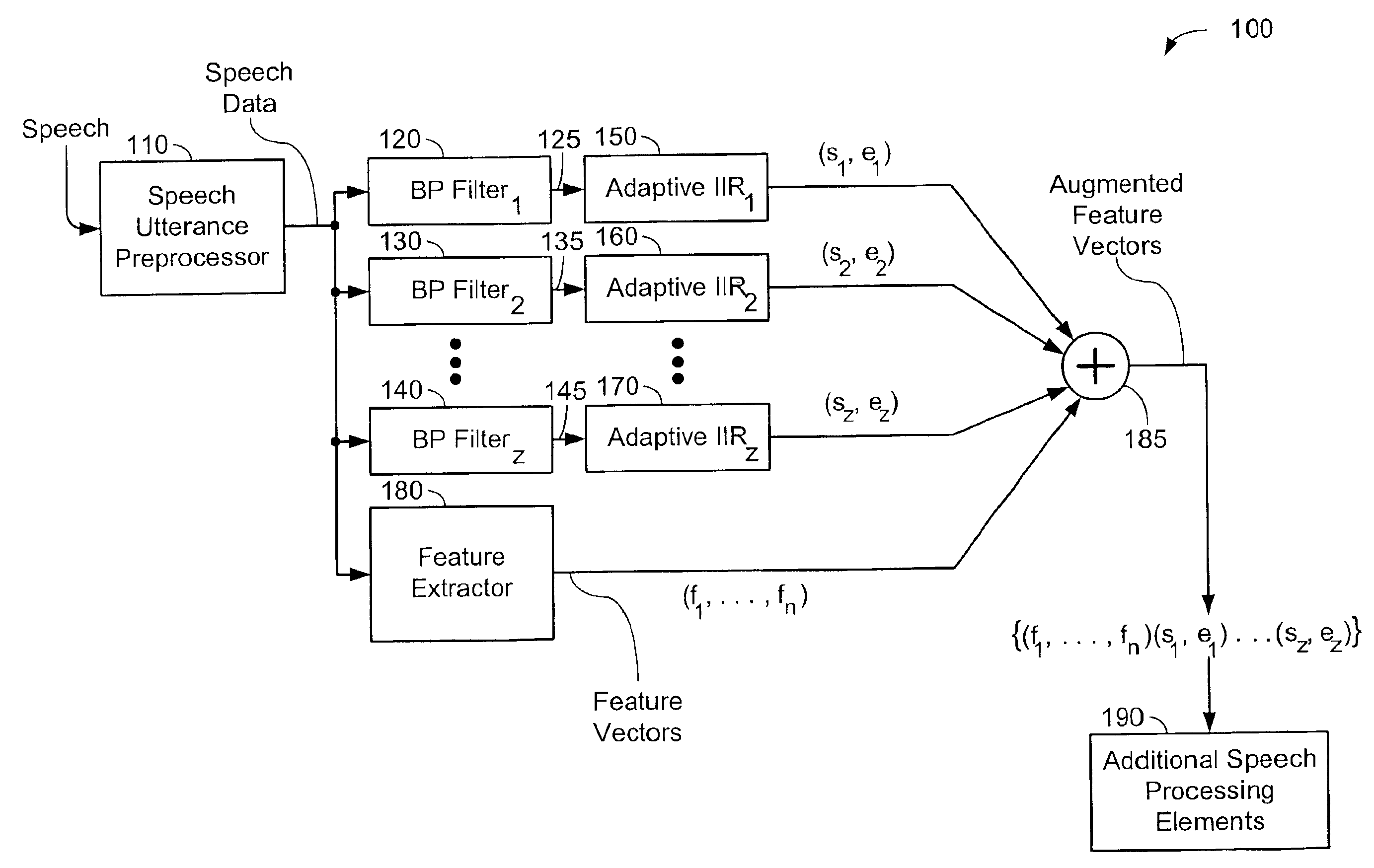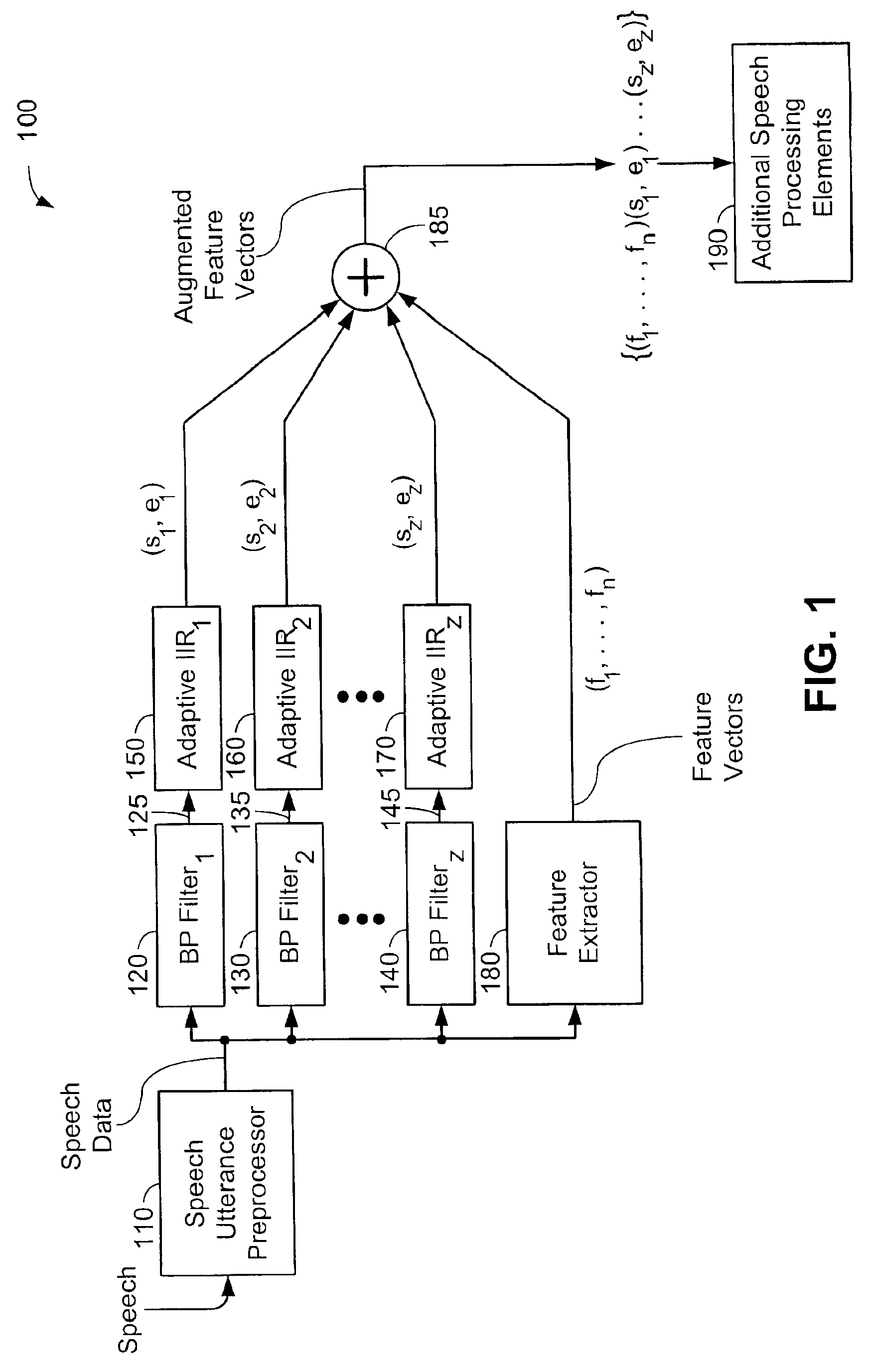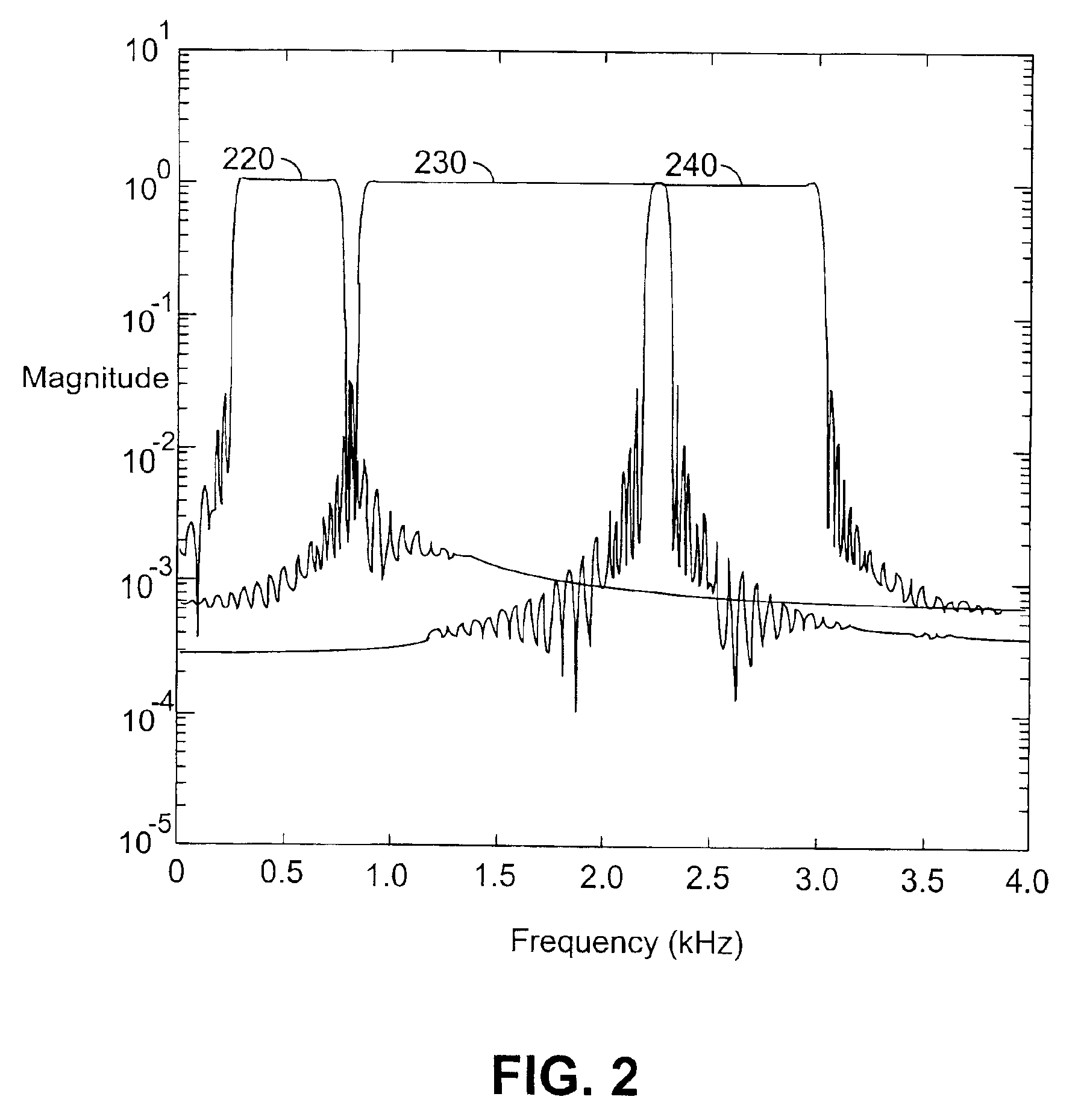Determination and use of spectral peak information and incremental information in pattern recognition
a pattern recognition and incremental information technology, applied in the field of pattern recognition techniques, can solve the problems of time-consuming and laborious process, low noise immunity of cepstral features, and in feature vectors, so as to reduce the reliance on noisy formant features, reduce the error of pattern recognition, and increase the effect of noise immunity
- Summary
- Abstract
- Description
- Claims
- Application Information
AI Technical Summary
Benefits of technology
Problems solved by technology
Method used
Image
Examples
Embodiment Construction
[0018]Referring now to FIG. 1, a speech recognition system 100 is shown that determines and uses spectral peak information and incremental information in speech recognition, in accordance with one embodiment of the present invention. System 100 comprises a speech utterance preprocessor 110, a number of band pass filters 120, 130 and 140, each producing a band pass filtered output 125, 135 and 145, respectively, a number of adaptive Infinite Impulse Response (IIR) filters 150, 160 and 170, a feature extractor 180, an augmenting device 185, and additional speech processing elements 190.
[0019]The speech utterance preprocessor 110 receives speech and generates representative speech waveforms, i.e., speech data. The speech utterance preprocessor 110 may include, for example, an audio-to-analog transducer (microphone) and an analog-to-digital converter that respectively transduce the utterances into an electrical signal and then convert the electrical signal into a digital signal represen...
PUM
 Login to View More
Login to View More Abstract
Description
Claims
Application Information
 Login to View More
Login to View More - R&D
- Intellectual Property
- Life Sciences
- Materials
- Tech Scout
- Unparalleled Data Quality
- Higher Quality Content
- 60% Fewer Hallucinations
Browse by: Latest US Patents, China's latest patents, Technical Efficacy Thesaurus, Application Domain, Technology Topic, Popular Technical Reports.
© 2025 PatSnap. All rights reserved.Legal|Privacy policy|Modern Slavery Act Transparency Statement|Sitemap|About US| Contact US: help@patsnap.com



